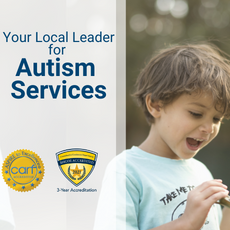
The ALEX Program
for Cerebral Visual Impairment
The ALEX Program for CVI was established in 2020 thanks to the tireless efforts of Alex's family and care team. The ALEX Program brings together some of the nations foremost experts in Cerebral Visual Impairment to provide access to experts closer to home, increase awareness of CVI amongst professionals, and provide resources for those working alongside those impacted by CVI.
Cerebral Visual Impairment (CVI) is a brain-based visual impairment caused by damage to the brain either at birth, or later in life. CVI is not a result of problems with the eyes themselves but rather damage to the brain. As the eye perceives light, a series of reactions occur within the brain that allow us to recognize objects, people, shape, size, distance, etc. Thus, CVI is an impairment of visual perception resulting from a variety of abnormalities within various parts of the brain.
CVI is the leading cause of visual impairment in children in developed countries. It is important to know what CVI is because early identification and intervention leads to increased opportunities to enhance outcomes for children with CVI. Most visual impairments are caused by damage to the eye itself, but in CVI the damage is in the brain.
How is CVI diagnosed?
Children with CVI demonstrate atypical visual behaviors very early in life. Parents are often the ones who first notice red flags. While a wide range of symptoms can manifest, children commonly show no blink reflex, inconsistent visual attention, lack of eye contact, or unusual attraction or dislike of bright light. CVI is diagnosed when a child’s visual difficulties are not explained by the child’s eye examination.
Getting the CVI diagnosis has been one of the biggest challenges and many eye professionals have limited knowledge and expertise to diagnose the condition. Teachers of the visually impaired and therapists who have experience with CVI can be advocates in helping get the diagnosis by working with families and other professionals. An ophthalmologist, optometrist or neurologist makes the diagnosis using information from the families, the child’s medical history, assessment of visual function, and tests that measure visual responses in the brain.
How is CVI treated?
CVI is an impairment, which cannot be cured. However, therapists and educators working together can assist children who have CVI learn to use their vision more effectively. This can be done through environmental accommodations and rehabilitation. At Easterseals Central Illinois, staff have received training and guidance from experts and are incorporating CVI strategies into therapy sessions with children diagnosed with CVI. Within the educational setting, teachers of the visually impaired (TVI) are specially trained educators who work with school staff to ensure that children with CVI are able to participate in school activities alongside their classmates. Developmental Therapists for Vision (DTV’s) are also available within the Illinois early intervention system to support families before their young children enter the school system. When a child has CVI, the teacher will:
· Help identify needed accommodations within the school setting
· Engage in intervention with the child to promote improvement in visual function over time
· Train other school personnel on the individual visual needs of the child.
What are the biggest misconceptions around CVI?
One of the biggest misconceptions is that all children with CVI also have additional impairments. In fact, children can have CVI without any other limitations, or they can have CVI in conjunction with other diagnoses such as cerebral palsy, hydrocephalus, and genetic conditions. It is also important to understand that there is no one specific protocol when treating a child with CVI. Each child has specific needs that require an individualized approach. Another big misconception is that children who have CVI will have typical vision if they work to resolve their visual deficits. Instead, while the use of vision may improve with accommodations, the child is likely to always require some accommodations to be successful in school and daily living.
What are some ways that teachers, families and therapists can adapt activities for children with CVI?
Some key accommodations include:
· Simplification of the visual environment
· Giving the child time to organize visual information
· Encouraging the child to physically investigate the visual scene (typically by touching with hands).
All of the above should be done with minimal competing stimuli such as sounds, smells, surrounding busyness and movement, physical discomfort, etc. Ongoing assessment is also important so the team can readjust the environment as the child’s vision improves and/or the child’s needs change.
About the Authors: Mindy S. Ely, Ph.D. is an Assistant Professor of Low Vision/Blindness Programs at Illinois State University; Susan Sullivan, M.Ed. is the Cerebral Visual Impairment Clinic Lead at Easterseals Central Illinois; and Angela K. DeLost, MS, OTR/L, ATP is VP of Program Services, Occupational Therapist Easterseals Central Illinois










